UPSC Mains GS Paper Exam Analysis 2024: The analysis for UPSC Mains General Studies (GS) Papers 1, 2, 3, and 4 is now available along with question papers.
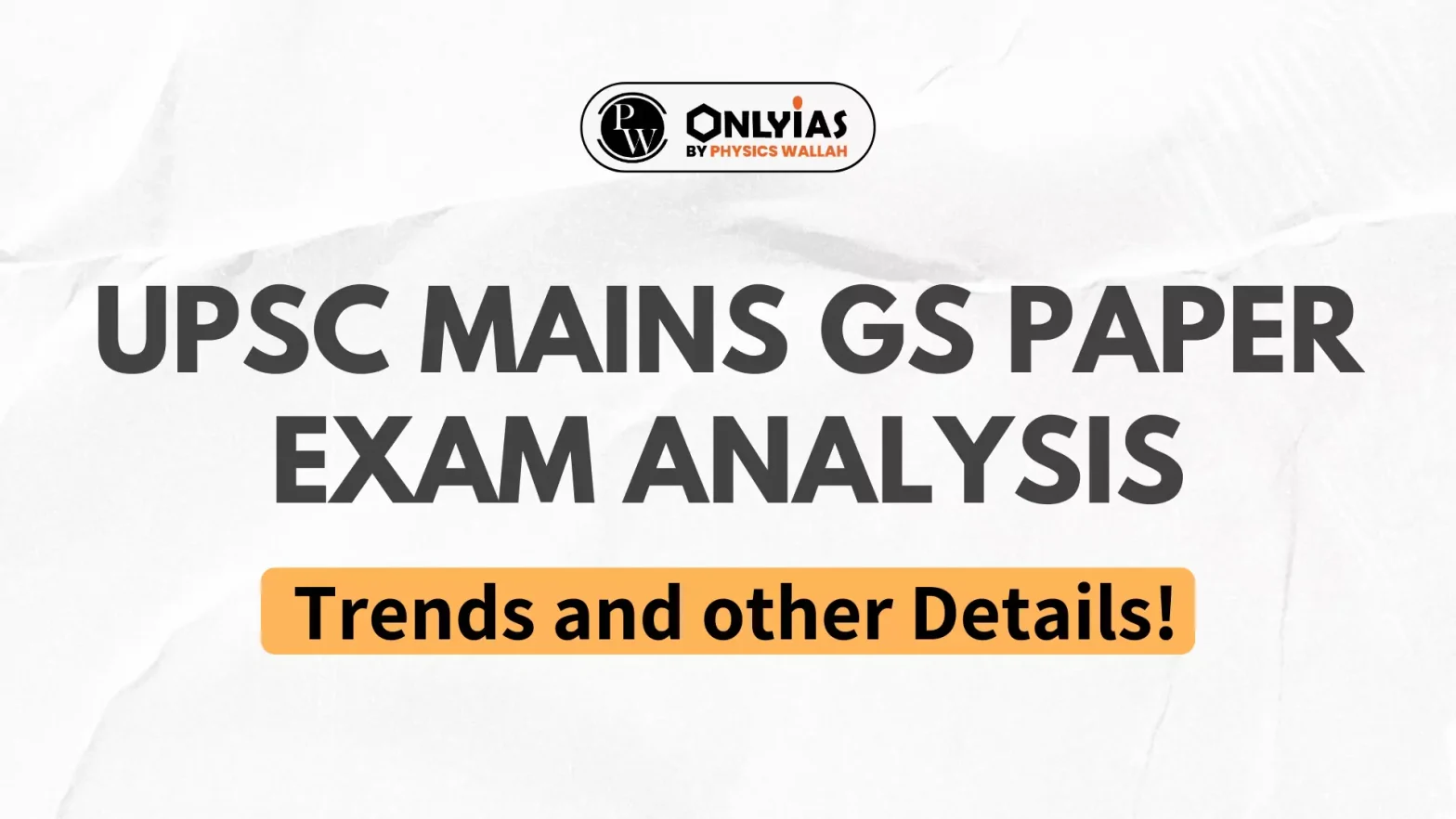
UPSC Mains General Studies (GS) paper analysis 2024 is now available for GS 1, GS 2, GS 3, and 4 papers. The UPSC Mains 2024 GS Paper 1 & GS Paper 2 was conducted successfully on 21st September. However, GS Paper 3 & GS Paper 4 are conducted on 22 September 2024. With GS papers carrying 1000 marks, their performance significantly impacts overall success in the Mains examination. UPSC often repeats themes, making it essential to conduct a thorough GS paper analysis to identify important topics and recurring patterns.
| UPSC Mains GS Paper 2024 Download | |
| UPSC Mains GS 1 Question Paper 2024 | Click Here |
| UPSC Mains GS 2 Question Paper 2024 | Click Here |
| UPSC Mains GS 3 Question Paper 2024 | Click Here |
| UPSC Mains GS 4 Question Paper 2024 | Click Here |
|
Check UPSC Mains GS Paper Analysis 2024 |
|
| UPSC Mains GS Paper 1 Analysis | UPSC Mains GS Paper 2 Analysis |
| UPSC Mains GS Paper 3 Analysis | UPSC Mains GS Paper 4 Analysis |
UPSC mains exam consists of nine papers, which have to be answered in descriptive format. Two papers among these are qualifying in nature. The marks scored in the remaining seven papers will be used to determine merit ranking. Out of these seven papers, there are four GS papers, which have a combined weightage of 1000 marks.
|
UPSC Mains GS paper Exam 2024 |
||
| Date | Forenoon Session (9:00 A.M. to 12:00 Noon) | Afternoon Session (2:30 P.M. to 5:30 P.M) |
| September 20, 2024 | Paper-I: Essay | No Paper |
| September 21, 2024 | Paper-II: General Studies-I | Paper-III: General Studies-II |
| September 22, 2024 | Paper-IV: General Studies-III | Paper-V: General Studies-IV |
Once the UPSC Mains GS Paper 2024 exam is over, find a detailed analysis by PWOnlyIAS experts here. Our comprehensive review will cover topic-wise breakdowns, question trends, and tips for improving your preparation strategy for future attempts.
There are four UPSC Mains General Studies (GS) Papers, each having a value of 250 marks. These GS papers cover different subjects such as History, Polity, Economy, Ethics, etc.
Out of the combined weightage of 1000 marks, candidates who score ~400 marks have a very high chance of qualifying for the Personality Test. The details about GS papers and the covered subjects are given below.
| Paper Name | Nature of Paper | Subjects | Marks | Duration |
| General Studies 1 | Considered for Merit Calculation | Geography
History Indian Heritage and Culture Social Issues |
250 | 3 hrs |
| General Studies 2 | Considered for Merit Calculation | Polity and Governance
Constitution Social Justice International Relations |
250 | 3 hrs |
| General Studies 3 | Considered for Merit Calculation | Economy and Growth
Science and Technology Environment and Ecology Disaster Management Internal Security |
250 | 3 hrs |
| General Studies 4 | Considered for Merit Calculation | Ethics, Integrity and Aptitude | 250 | 3 hrs |
UPSC mains GS paper exam analysis is based on trends from the past 4-5 years. Based on this information, we can deduce the following information:
UPSC has been trying to interlink multiple themes and ask questions.
The UPSC Mains GS Paper 1 2024, which consists of subjects such as History, Geography, and Indian Society, was conducted on 21st September 2024, from 9 AM to 12 PM. Over the years, the difficulty level of questions in History and Geography has increased.
Candidates are advised not to limit their preparation to the GS level alone. Analyzing questions from History and Geography Optional subjects can help predict the nature of the questions.
Below, we have provided an analysis of the number of questions asked in each subject along with links to download GS Paper 1 questions from previous years.
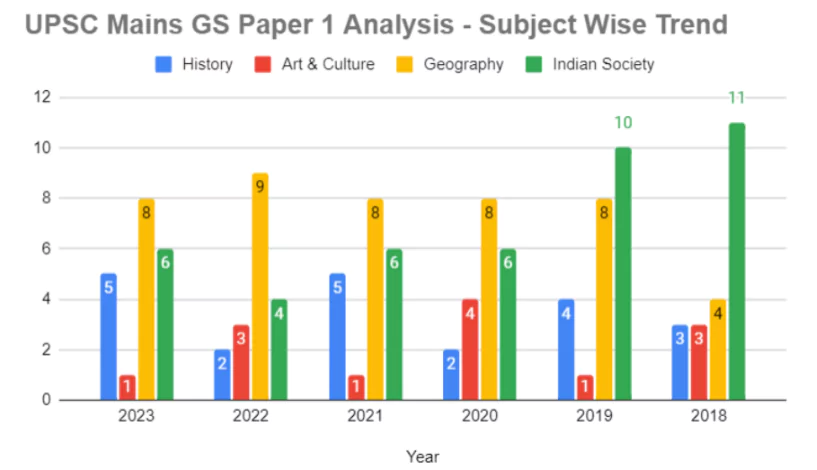
| Year | Question Paper Links |
| GS Paper 1 Question Paper 2024 | Click Here |
| GS Paper 1 Question Paper 2023 | Click Here |
| GS Paper 1 Question Paper 2022 | Click Here |
| GS Paper 1 Question Paper 2021 | Click Here |
| GS Paper 1 Question Paper 2020 | Click Here |
| GS Paper 1 Question Paper 2019 | Click Here |
We have attached a detailed analysis video of GS Paper 1 after the conclusion of the exams.
The UPSC Mains 2024 GS Paper 1 live analysis is provided here. Candidates are eagerly awaiting the end of the exam to share their first reactions. Based on trends from previous years, the paper is expected to challenge candidates with a mix of conceptual and analytical questions, particularly in History, Geography, and Indian Society. As soon as the exam is over, a more detailed analysis and first reactions from students will be available.
In UPSC mains GS paper 2, Indian polity and constitution have remained a priority topic for asking questions. Combined with governance and IR, UPSC has been asking topics based on current affairs. UPSC Mains GS paper 2 was conducted from 2:30 PM to 5:30 PM on 21st September 2024. The analysis of number of questions asked from different GS subjects is given below:
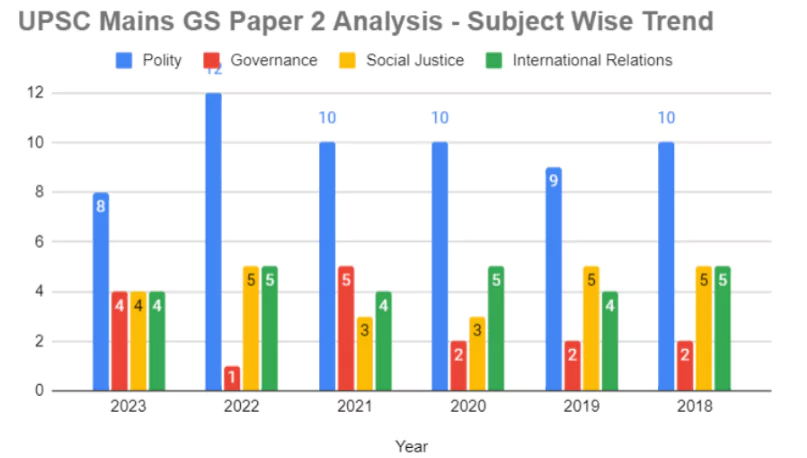
| Year | Question Paper Links |
| GS Paper 2 Question Paper 2023 | Click Here |
| GS Paper 2 Question Paper 2022 | Click Here |
| GS Paper 2 Question Paper 2021 | Click Here |
| GS Paper 2 Question Paper 2020 | Click Here |
| GS Paper 2 Question Paper 2019 | Click Here |
UPSC Mains 2024 GS Paper 2 live analysis was provided by the PWOnlyIAS experts. Candidates are keenly awaiting the end of the exam to share their initial feedback.
Current affairs is the main theme in UPSC mains GS paper 3. Every question asked in this paper has been in the news and candidates are expected to know about them. Analytical understanding of topics is critical while answering these questions. Given below is the detailed breakdown of subjects asked in GS paper 2.
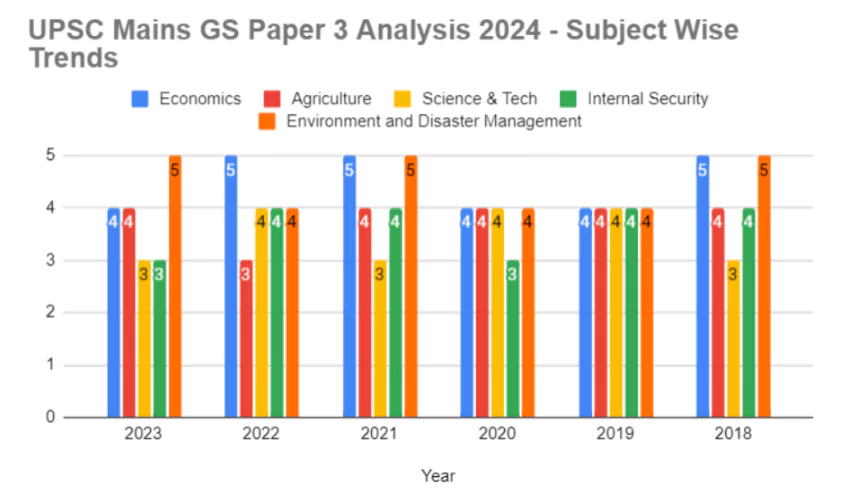
Check the complete detailed UPSC Mains GS Paper 3 Exam Analysis 2024 done by the PWOnlyIAS experts for the exam conducted in the morning shift on September 22, 2024.
| Year | Question Paper Links |
| GS Paper 3 Question Paper 2023 | Click Here |
| GS Paper 3 Question Paper 2022 | Click Here |
| GS Paper 3 Question Paper 2021 | Click Here |
| GS Paper 3 Question Paper 2020 | Click Here |
| GS Paper 3 Question Paper 2019 | Click Here |
GS Paper 4 consists of two parts: theoretical and case studies. Candidates have to apply the theories studied in Part 1 to answer questions in Part 2. Candidates having a good understanding of the subject have a good chance of scoring high marks on this paper.
Stay tuned to check the first reaction of UPSC Mains GS 4 Paper and its detailed analysis done by the PWOnlyIAS experts.
The distribution of themes based on the number of marks is given below.
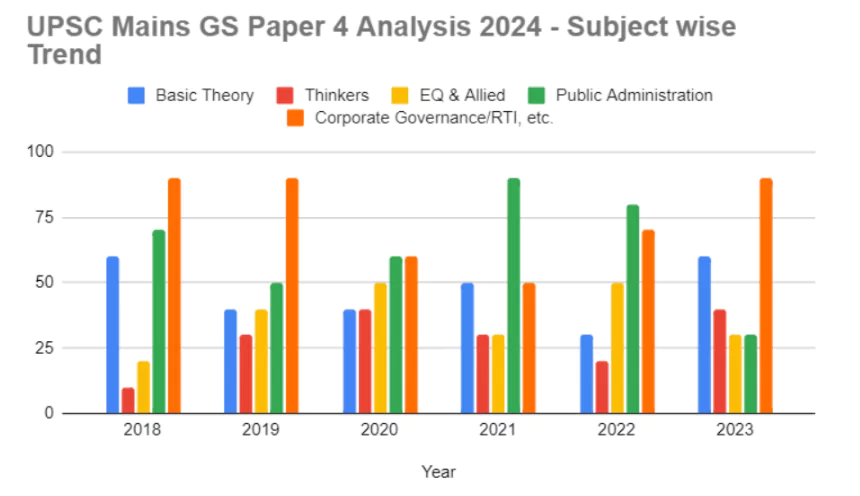
| Year | Question Paper Links |
| GS Paper 4 Question Paper 2024 | Click Here |
| GS Paper 4 Question Paper 2023 | Click Here |
| GS Paper 4 Question Paper 2022 | Click Here |
| GS Paper 4 Question Paper 2021 | Click Here |
| GS Paper 4 Question Paper 2020 | Click Here |
| GS Paper 4 Question Paper 2019 | Click Here |
Beginning your preparation for UPSC 2025? Join the best courses from Physics Wallah to boost your preparation! Register Now!
| Must Read | |
| NCERT Notes For UPSC | UPSC Daily Current Affairs |
| UPSC Blogs | UPSC Daily Editorials |
| Daily Current Affairs Quiz | Daily Main Answer Writing |
| UPSC Mains Previous Year Papers | UPSC Test Series 2024 |
GS paper analysis will help candidates identify the most important topics that can be asked in the exam.
The total weightage of UPSC mains GS papers is 1000 marks. Their mark weightage is more than 50% of the total weightage of UPSC mains examination.
There are 4 UPSC mains GS papers, each having a value of 250 marks.
Subjects such as Geography, Indian Polity and History have the highest weightage in UPSC mains GS paper.
No. All GS papers are equally challenging as they cover a variety of subjects that require in-depth knowledge.

<div class="new-fform">
</div>